Zahra Esmaeilbeig
Ambiguity Function Shaping in FMCW Automotive Radar
Feb 26, 2024

Abstract:Frequency-modulated continuous wave (FMCW) radar with inter-chirp coding produces high side-lobes in the Doppler and range dimensions of the radar's ambiguity function. The high side-lobes may cause miss-detection due to masking between targets that are at similar range and have large received power difference, as is often the case in automotive scenarios. In this paper, we develop a novel code optimization method that attenuates the side-lobes of the radar's ambiguity function. In particular, we introduce a framework for designing radar transmit sequences by shaping the radar Ambiguity Function (AF) to a desired structure. The proposed approach suppresses the average amplitude of the AF of the transmitted signal in regions of interest by efficiently tackling a longstanding optimization problem. The optimization criterion is quartic in nature with respect to the radar transmit code. A cyclic iterative algorithm is introduced that recasts the quartic problem as a unimodular quadratic problem (UQP) which can be tackled using power-method-like iterations (PMLI). Our numerical results demonstrate the effectiveness of the proposed algorithm in designing sequences with desired AF which is of great interest to the future generations of automotive radar sensors.
Submodular Optimization for Placement of Intelligent Reflecting Surfaces in Sensing Systems
Oct 22, 2023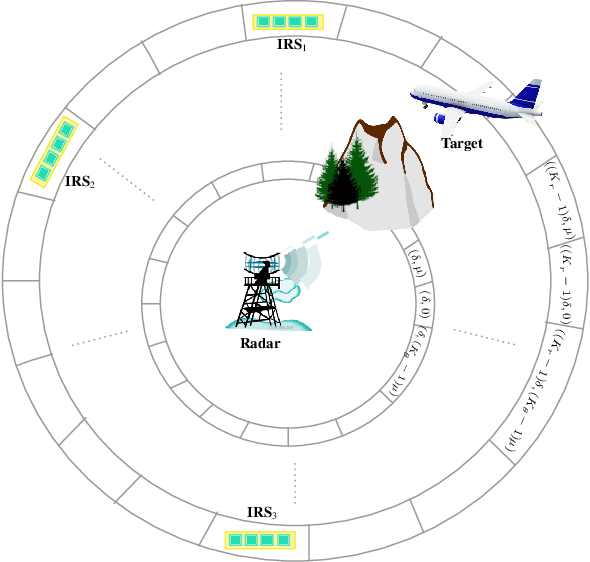
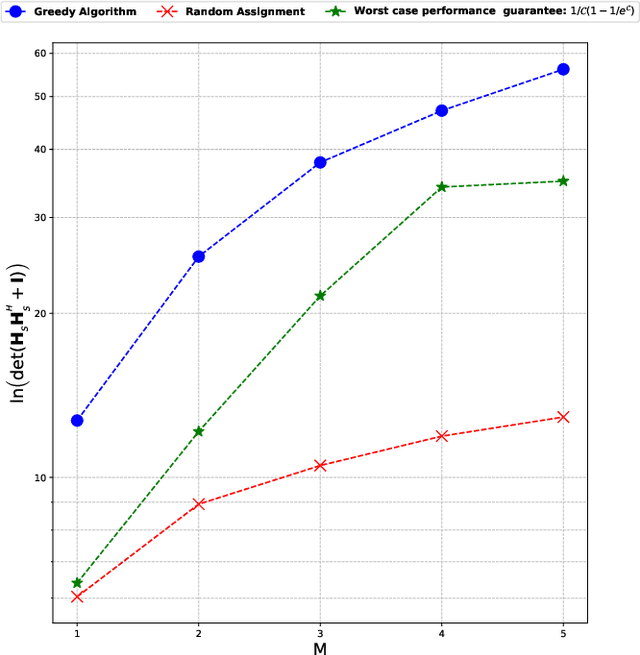
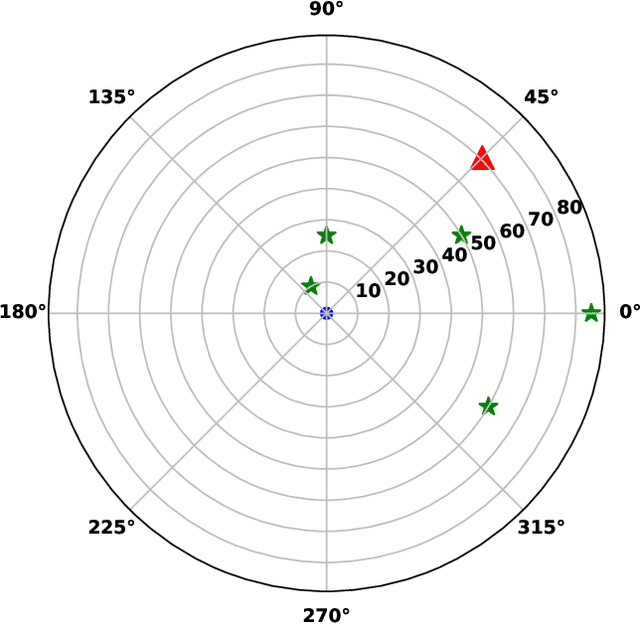
Abstract:Intelligent reflecting surfaces (IRS) and their optimal deployment are the new technological frontier in sensing applications. Recently, IRS have demonstrated potential in advancing target estimation and detection. While the optimal phase-shift of IRS for different tasks has been studied extensively in the literature, the optimal placement of multiple IRS platforms for sensing applications is less explored. In this paper, we design the placement of IRS platforms for sensing by maximizing the mutual information. In particular, we use this criterion to determine an approximately optimal placement of IRS platforms to illuminate an area where the target has a hypothetical presence. After demonstrating the submodularity of the mutual information criteria, we tackle the design problem by means of a constant-factor approximation algorithm for submodular optimization. Numerical results are presented to validate the proposed submodular optimization framework for optimal IRS placement with worst case performance bounded to $1-1/e\approx 63 \%$.
Space-Time Adaptive Processing in Connected and Automated Vehicular Radar Platoons
Sep 13, 2023

Abstract:In this study, we develop a holistic framework for space-time adaptive processing (STAP) in connected and automated vehicle (CAV) radar systems. We investigate a CAV system consisting of multiple vehicles that transmit frequency-modulated continuous-waveforms (FMCW), thereby functioning as a multistatic radar. Direct application of STAP in a network of radar systems such as in a CAV may lead to excess interference. We exploit time division multiplexing (TDM) to perform transmitter scheduling over FMCW pulses to achieve high detection performance. The TDM design problem is formulated as a quadratic assignment problem which is tackled by power method-like iterations and applying the Hungarian algorithm for linear assignment in each iteration. Numerical experiments confirm that the optimized TDM is successful in enhancing the target detection performance.
Deep Learning Meets Adaptive Filtering: A Stein's Unbiased Risk Estimator Approach
Jul 31, 2023

Abstract:This paper revisits two prominent adaptive filtering algorithms through the lens of algorithm unrolling, namely recursive least squares (RLS) and equivariant adaptive source separation (EASI), in the context of source estimation and separation. Building upon the unrolling methodology, we introduce novel task-based deep learning frameworks, denoted as Deep RLS and Deep EASI. These architectures transform the iterations of the original algorithms into layers of a deep neural network, thereby enabling efficient source signal estimation by taking advantage of a training process. To further enhance performance, we propose training these deep unrolled networks utilizing a loss function grounded on a Stein's unbiased risk estimator (SURE). Our empirical evaluations demonstrate the efficacy of this SURE-based approach for enhanced source signal estimation.
Mutual Interference Mitigation in PMCW Automotive Radar
Jun 16, 2023

Abstract:This paper addresses the challenge of mutual interference in phase-modulated continuous wave (PMCW) millimeter-wave (mmWave) automotive radar systems. The increasing demand for advanced driver assistance systems (ADAS) has led to a proliferation of vehicles equipped with mmWave radar systems that operate in the same frequency band, resulting in mutual interference that can degrade radar performance creating safety hazards. We consider scenarios involving two similar PMCW radar systems and propose an effective technique for a cooperative design of transmit waveforms such that the mutual interference between them is minimized. The proposed approach is numerically evaluated via simulations of a mmWave automotive radar system. The results demonstrate that the proposed technique notably reduces mutual interference and enhances radar detection performance while imposing very little computational cost and a negligible impact on existing infrastructure in practical automotive radar systems
Quantized Phase-Shift Design of Active IRS for Integrated Sensing and Communications
Mar 10, 2023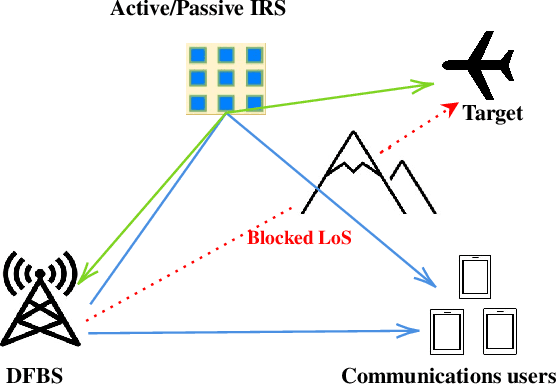
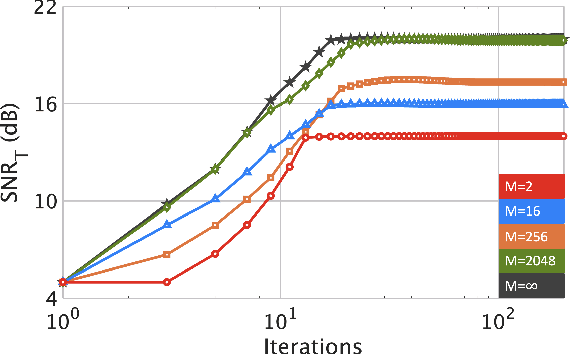
Abstract:Integrated sensing and communications (ISAC) is a spectrum-sharing paradigm that allows different users to jointly utilize and access the crowded electromagnetic spectrum. In this context, intelligent reflecting surfaces (IRSs) have lately emerged as an enabler for non-line-of-sight (NLoS) ISAC. Prior IRS-aided ISAC studies assume passive surfaces and rely on the continuous-valued phase shift model. In practice, the phase-shifts are quantized. Moreover, recent research has shown substantial performance benefits with active IRS. In this paper, we include these characteristics in our IRS-aided ISAC model to maximize the receive radar and communications signal-to-noise ratios (SNR) subjected to a unimodular IRS phase-shift vector and power budget. The resulting optimization is a highly non-convex unimodular quartic optimization problem. We tackle this via a bi-quadratic transformation to split the problem into two quadratic sub-problems that are solved using the power iteration method. The proposed approach employs the M-ary unimodular sequence design via relaxed power method-like iteration (MaRLI) to design the quantized phase-shifts. As expected, numerical experiments demonstrate that our active IRS-ISAC system design with MaRLI converges to a higher value of SNR when we increase the number of IRS quantization bits.
Moving Target Detection via Multi-IRS-Aided OFDM Radar
Feb 24, 2023

Abstract:An intelligent reflecting surface (IRS) consists of passive reflective elements capable of altering impinging waveforms. The IRS-aided radar systems have recently been shown to improve detection and estimation performance by exploiting the target information collected via non-line-of-sight paths. However, the waveform design problem for an IRS-aided radar has remained relatively unexplored. In this paper, we consider a multi-IRS-aided orthogonal frequency-division multiplexing (OFDM) radar and study the theoretically achievable accuracy of target detection. In addition, we jointly design the OFDM signal and IRS phase-shifts to optimize the target detection performance via an alternating optimization approach. To this end, we formulate the IRS phase-shift design problem as a unimodular bi-quadratic program which is tackled by a computationally cost-effective approach based on power-method-like iterations. Numerical experiments illustrate that our proposed joint design of IRS phase-shifts and the OFDM code improves the detection performance in comparison with conventional OFDM radar.
Joint Waveform and Passive Beamformer Design in Multi-IRS Aided Radar
Oct 27, 2022
Abstract:Intelligent reflecting surface (IRS) technology has recently attracted a significant interest in non-light-of-sight radar remote sensing. Prior works have largely focused on designing single IRS beamformers for this problem. For the first time in the literature, this paper considers multi-IRS-aided multiple-input multiple-output (MIMO) radar and jointly designs the transmit unimodular waveforms and optimal IRS beamformers. To this end, we derive the Cramer-Rao lower bound (CRLB) of target direction-of-arrival (DoA) as a performance metric. Unimodular transmit sequences are the preferred waveforms from a hardware perspective. We show that, through suitable transformations, the joint design problem can be reformulated as two unimodular quadratic programs (UQP). To deal with the NP-hard nature of both UQPs, we propose unimodular waveform and beamforming design for multi-IRS radar (UBeR) algorithm that takes advantage of the low-cost power method-like iterations. Numerical experiments illustrate that the MIMO waveforms and phase shifts obtained from our UBeR algorithm are effective in improving the CRLB of DoA estimation.
Cramer-Rao Lower Bound Optimization for Hidden Moving Target Sensing via Multi-IRS-Aided Radar
Oct 11, 2022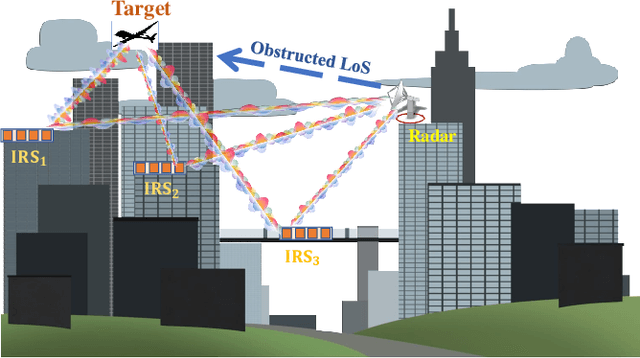
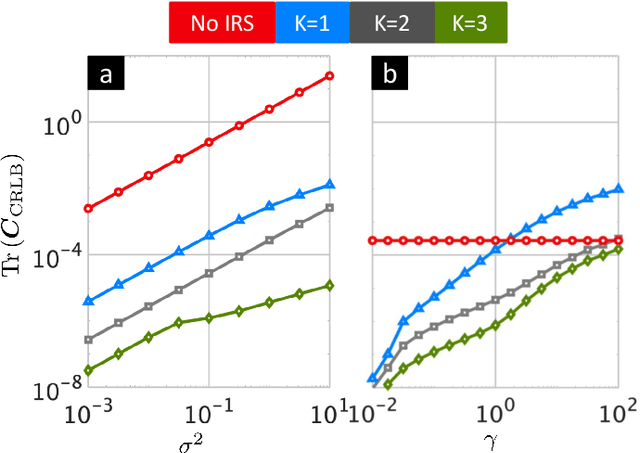
Abstract:Intelligent reflecting surface (IRS) is a rapidly emerging paradigm to enable non-line-of-sight (NLoS) wireless transmission. In this paper, we focus on IRS-aided radar estimation performance of a moving hidden or NLoS target. Unlike prior works that employ a single IRS, we investigate this problem using multiple IRS platforms and assess the estimation performance by deriving the associated Cramer-Rao lower bound (CRLB). We then design Doppler-aware IRS phase-shifts by minimizing the scalar A-optimality measure of the joint parameter CRLB matrix. The resulting optimization problem is non-convex, and is thus tackled via an alternating optimization framework. Numerical results demonstrate that the deployment of multiple IRS platforms with our proposed optimized phase-shifts leads to a higher estimation accuracy compared to non-IRS and single-IRS alternatives.
IRS-Aided Radar: Enhanced Target Parameter Estimation via Intelligent Reflecting Surfaces
Oct 25, 2021
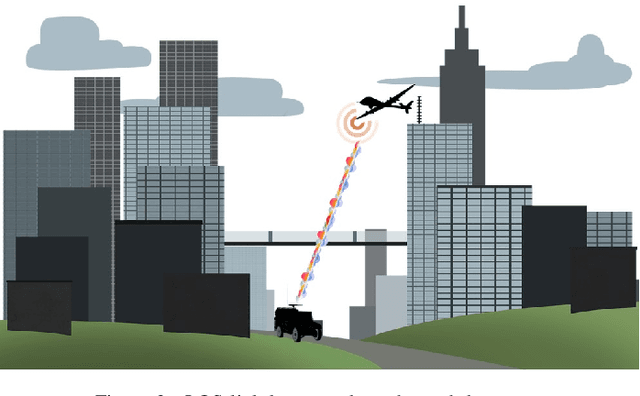
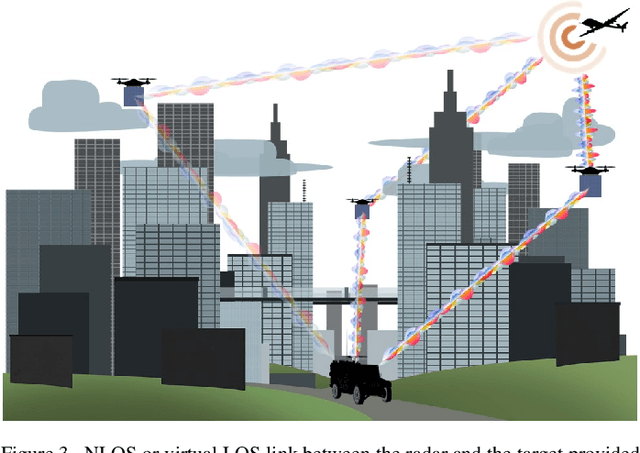
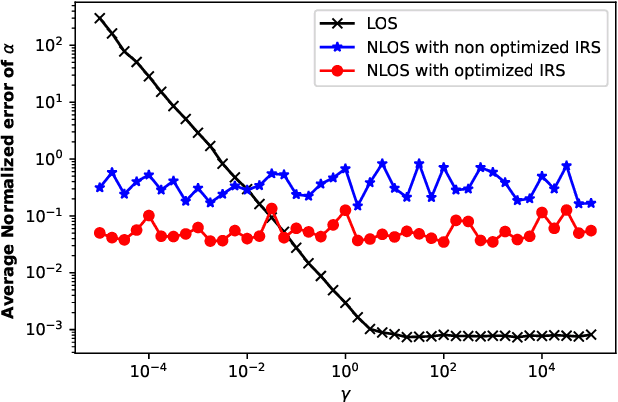
Abstract:The intelligent reflecting surface (IRS) technology has recently attracted a lot of interest in wireless communications research. An IRS consists of passive reflective elements capable of tuning the phase, amplitude, frequency and polarization of the impinging waveforms. Given such desirable properties, the wireless channel characteristics can be controlled and optimized for specific signal design and processing needs -- thus promising significant potential in radar applications. In this paper, we establish the theoretical foundations for introducing IRS into a radar system and study the potential to improve target parameter estimation. More specifically, we will investigate the deployment of IRS in cases where the line-of-sight (LOS) link is weak or blocked by obstructions. We demonstrate that the IRS can provide a virtual or non-line-of-sight (NLOS) link between the radar and target leading to an enhanced radar performance. The effectiveness of such an IRS-provided virtual link in estimating the moving target parameters is illustrated under both optimized and non-optimized IRS scenarios. Numerical simulations indicate that the IRS can enhance the target parameter estimation when the LOS link is weaker than $\sim 10^{-1}$ in relative strength in comparison with the NLOS link.
 Add to Chrome
Add to Chrome Add to Firefox
Add to Firefox Add to Edge
Add to Edge